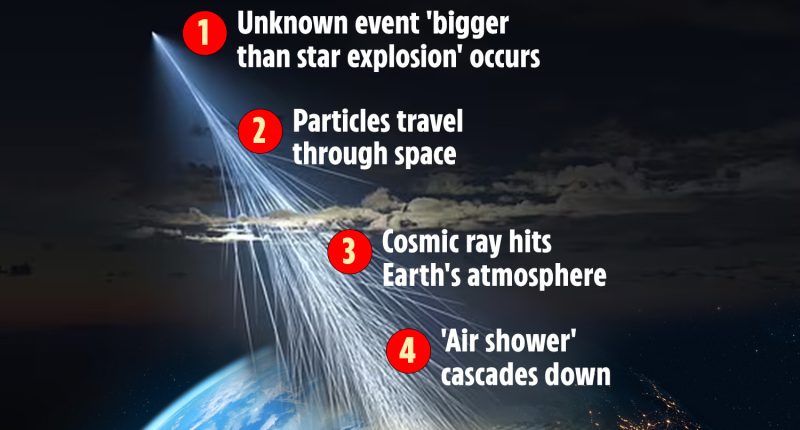ASTRONOMERS have been left scratching their heads after a powerful cosmic beam from “deep space” was detected in the United States.
The particles, nicknamed “Amaterasu” after the sun goddess in Japanese mythology, was spotted in an observatory in Utah‘s West Desert – but space scientists have no idea what caused it.
New research has revealed the Amaterasu beam, while invisible to the naked eye, packed the same punch as dropping a brick on your toe from waist height.
It carried the energy of 240 quintillion electron volts – compared with a typical lightning bolt which is about 300 million volts.
Cosmic rays are charged particles that travel through space and rain down on Earth constantly.
Humans are usually protected from any harmful effects of the particles, but they do pose a risk to astronauts who may suffer structural damage to DNA upon exposure, according to NASA.
Read more on space
Some rays have also been known to cause computer glitches.
Low-energy beams can come from the sun but rarer, high-energy ones are thought to travel to Earth from other galaxies and extra-galactic sources, or a “void… in the universe”.
Co-author of research published in the journal Science, John Matthews, told CNN: “If you hold out your hand, one [cosmic ray] goes through the palm of your hand every second, but those are really low-energy things.
“When you get out to these really high-energy [cosmic rays], it’s more like one per square kilometre per century. It’s never going through your hand.”
Most read in Tech
The facility where the exceptional ray was discovered, called the Telescope Array, is comprised of 507 surface detectors the size of ping-pong tables covering 270 square miles.
History was made at the observatory on May 27, 2021 when the Amaterasu ray struck the atmosphere above Utah and rained particles to the ground.
The event triggered 23 of the Telescope Array’s surface detectors with a mammoth calculated energy of about 244 exa-electron volts.
Matthews said: “You can look …[at] how many particles hit each detector and that tells you what the energy of the primary cosmic ray was.”
Despite years of research, the source of the powerful particles continues to baffle scientists.
A professor of physics at New York University Glennys Farrar explained: “What is required is a region of very high magnetic fields — like a super-sized LHC, but natural.
“And the conditions required are really exceptional, so the sources are very very rare, and the particles are dissipated into the vast universe, so the chances of one hitting Earth are tiny.”
Some say the Amaterasu particles may have originated from an empty area of space bordering the Milky Way galaxy known as the Local Void.
Matthews said: “It comes from a region that looks like a local empty space. It’s a void. So what the heck’s going on?”
The Telescope Array will soon undergo an expansion of 500 new detectors across an area the size of Rhode Island that may shed some light on the cosmic mystery.










